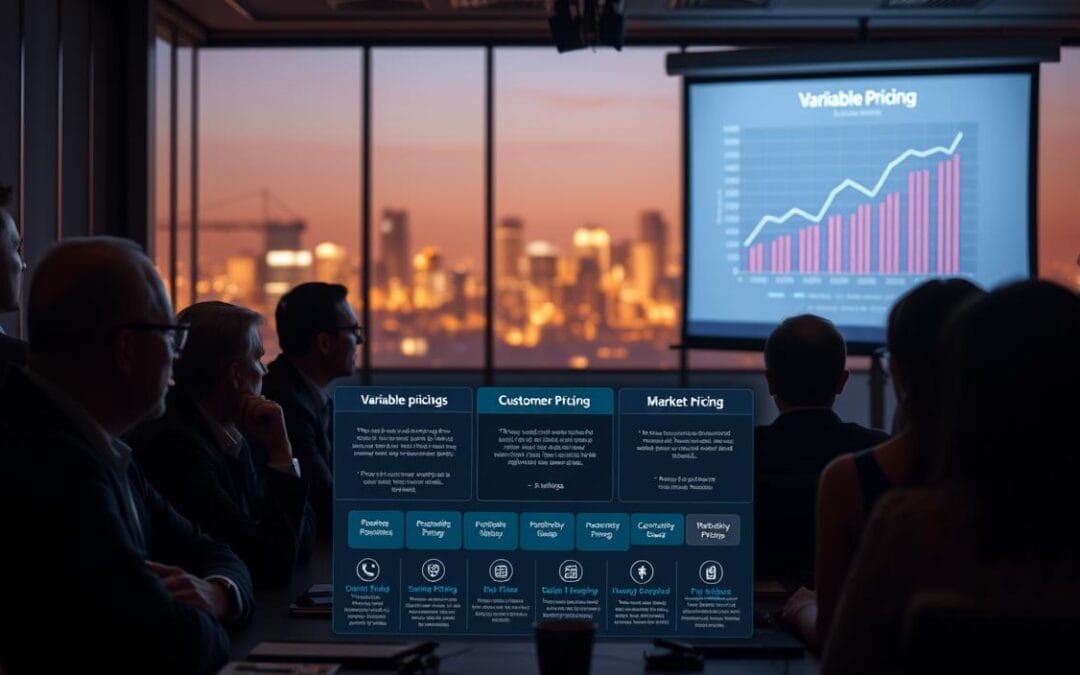Did you know Aussie shoppers lose roughly $1,200 yearly by missing the best purchase timing? Or that 73% of online “sales” don’t actually discount products? These eye-opening stats reveal how businesses use sophisticated strategies to charge varying amounts for identical items.
This practice, known as price discrimination, isn’t about unfair treatment – it’s a calculated approach where companies adjust costs based on factors like purchase timing, location, or customer behaviour. Think airline tickets that spike during school holidays or cinema discounts for students. Even your browsing history can influence what you pay online.
Modern retailers use real-time algorithms to personalise offers, making it harder to spot genuine bargains. That’s where tools like Wispri become essential. As Australia’s top price-tracking platform, it monitors products across retailers and alerts you when prices hit your target – turning complex pricing tactics to your advantage.
Key Takeaways
- Businesses often adjust costs using dynamic methods, not random chance
- Online retailers may show personalised rates based on your data
- Timing impacts pricing more than most shoppers realise
- Price-tracking tools help identify genuine savings opportunities
- Consumer behaviour directly influences personalised offers
Introduction to Price Discrimination in Today’s Market
Imagine booking a flight for $300 while the person beside you paid $450 for the same seat. This everyday scenario reflects how modern pricing strategies adapt to market conditions. Businesses now use real-time data and algorithms to tailor offers, creating a shopping landscape where your decisions directly influence what you pay.
The evolution of pricing strategies
Gone are the days of fixed price tags. Australian companies have shifted from simple markups to dynamic models that change hourly. Airlines, hotels, and even streaming services adjust rates based on demand spikes, inventory levels, or your browsing patterns.
| Factor | Traditional Approach | Modern Approach |
|---|---|---|
| Pricing Model | Fixed for all customers | Personalised offers |
| Adjustment Frequency | Monthly/Yearly | Real-time updates |
| Data Usage | Basic sales figures | AI-driven behaviour analysis |
How market dynamics affect prices
Three key forces shape what you pay:
- Competition: Rival brands undercut each other during sales events
- Seasonality: Winter coats cost 40% more in June than January
- Economic shifts: More discounts appear during recessions
Online retailers test prices across postcodes – a tactic that’s both legal and widespread. Tools like Wispri help you track these changes, ensuring you never overpay.
Understanding Price Discrimination
Ever wonder why your neighbour snagged that TV cheaper than you? It’s not luck – businesses use sophisticated methods to charge varied amounts for identical goods and services. This approach focuses on what customers will pay rather than production costs.

What Sets It Apart
Unlike upgraded product versions with extra features, variable pricing hinges on customer profiles. Your location, shopping habits, or even device type can trigger different prices for the same item. Streaming platforms often trial this by offering lower rates to new subscribers.
Why Companies Do It
Businesses aim to capture what economists call ‘consumer surplus’ – the gap between what you’d pay and the actual cost. By tailoring offers, they attract budget-conscious shoppers while charging premium rates to less price-sensitive buyers.
Geography plays a big role too. A coffee chain might charge $5.50 in Sydney’s CBD but $4.80 in regional NSW, reflecting local market conditions. Timing also matters – early bird discounts reward planners, while last-minute buyers often pay more.
Smart shoppers can turn this system to their advantage. Tools like Wispri track different prices across retailers, helping you spot patterns and time purchases perfectly. Remember, these strategies aren’t personal – they’re just businesses playing the numbers game.
Key Theories Behind Price Discrimination and Market Power
Ever noticed how your local café charges $4.50 for a flat white while airport outlets ask $6.50? This everyday example shows how businesses leverage market power to adjust what different customers pay. Behind these strategies lie economic principles that shape our shopping experiences.
Consumer Surplus and Elasticity of Demand
Think of consumer surplus as the hidden discount you feel when paying less than you’d willingly part with. Companies aim to shrink this gap through tailored offers. Your willingness to pay $8 for sunscreen in December versus $5 in July? That’s elasticity of demand in action.
Businesses categorise shoppers into two groups:
- Price-sensitive buyers who wait for sales
- Brand-loyal customers who pay premium rates
What Drives Pricing Influence
Market power acts like a volume knob for pricing control. Companies with strong influence can adjust rates without losing their customer base. How do they gain this advantage?
| Factor | Description | Real-World Example |
|---|---|---|
| Product Uniqueness | Offering features competitors can’t match | Apple’s ecosystem integration |
| Barriers to Entry | High startup costs deter new rivals | Telstra’s infrastructure dominance |
| Customer Lock-In | Switching costs keep buyers loyal | Adobe’s Creative Cloud subscriptions |
Smart shoppers can counter these tactics. Tools like Wispri track demand patterns across retailers, helping you spot when “exclusive” deals are truly worthwhile. Remember, your choices directly shape what businesses think you’ll pay.
Types of Price Discrimination: First, Second, and Third Degree
Have you ever received a special discount that friends didn’t get? Businesses use three main methods to adjust what you pay for identical items. These approaches – personalised deals, product tiers, and group-specific offers – shape how we shop every day.

Personalised Pricing and Versioning
First-degree strategies target individual spending habits. Picture negotiating a car price where dealers adjust figures based on your responses. Online retailers now mimic this through cookies and purchase history, creating unique offers for each visitor.
Second-degree methods focus on product tiers. Streaming services exemplify this with basic/premium plans. As one industry insider notes:
“Versioning lets customers choose their comfort zone while maximising revenue.”
| Type | Strategy | Common Example |
|---|---|---|
| First-Degree | Individualised offers | Dynamic online pricing |
| Second-Degree | Feature-based tiers | Software subscriptions |
| Third-Degree | Group-specific rates | Student discounts |
Market Segmentation Strategies
Third-degree approaches divide shoppers into groups. Cinema chains use age-based pricing, while airlines adjust fares by departure dates. Geographic variations see Sydneysiders often paying more than regional buyers for identical products.
Successful segmentation relies on identifying characteristics like:
- Demographics (age/occupation)
- Purchase timing (early vs last-minute)
- Device type (mobile vs desktop)
Tools like Wispri help navigate these layered strategies by tracking patterns across market segments. Understanding these methods lets you spot when “exclusive” deals truly benefit your wallet.
The Role of Price Fences and Customer Segmentation
Ever scored a discount others missed? Businesses use invisible rules called price fences to sort shoppers into groups. These criteria help companies offer varied rates while keeping their strategies lawful and logical.
What defines your shopping group?
Retailers group buyers using three main filters:
- Who you are: Student status or postcode
- When you buy: Early bookings vs last-minute purchases
- How you shop: Mobile app users often get exclusive deals
| Criteria Type | Common Examples | Business Benefit |
|---|---|---|
| Demographic | Senior discounts | Attracts fixed-income buyers |
| Geographic | Regional fuel pricing | Matches local spending power |
| Behavioural | Early-bird specials | Rewards planners, upsells others |
Keeping deals in their lane
Stopping resellers is crucial. That’s why concert tickets often say “non-transferable”. Service-based businesses like gyms have natural protection – you can’t resell a yoga class.
One retail manager explains:
“Membership programs let us offer lower rates without worrying about resale. Your gym pass only works for you.”
Smart shoppers can use these systems. Booking flights on Tuesday afternoon? That’s when airlines often test lower fares for flexible travellers. Tools like Wispri track these patterns, helping you spot when to click “buy”.
Risks and Benefits of Price Discrimination
Like a coin with two sides, tailored pricing strategies create winners and losers in every transaction. While businesses sharpen their competitive edge, shoppers face both opportunities and pitfalls in this dynamic marketplace.

Advantages for sellers and competitive edge
Companies using these tactics often see revenue jumps of 10-15% through smarter customer targeting. Off-peak discounts fill empty restaurant tables, while premium pricing funds better services for loyal patrons. As one retail analyst explains:
“Strategic pricing lets businesses fund innovation while keeping essentials affordable for budget-conscious buyers.”
This approach boosts economic efficiency by expanding access to goods. Students get cheaper software, pensioners access discounted travel – offers that wouldn’t exist under flat-rate models.
Potential drawbacks for consumers
Ever felt that sinking feeling when friends paid less for identical concert tickets? Many Australians report frustration with personalised offers that feel invasive. Comparison shopping becomes trickier when prices shift like desert sands.
Market dominance compounds these issues. Large chains can undercut local rivals using complex algorithms, potentially reducing competition over time. Your postcode or device type might quietly add 5-7% to checkout totals without clear explanation.
The key lies in smart navigation. Tools like Wispri help you spot when tailored pricing works in your favour versus when you’re being nudged to overspend. Knowledge turns these strategies from traps into opportunities.
Legal Landscape of Price Discrimination in Australia
Did you know Australia once banned flexible pricing strategies? Our laws have shifted dramatically since the 1970s, creating today’s complex market environment. Let’s unpack how these changes affect what you pay for everyday goods and services.
From strict bans to smart regulation
Back in 1974, the Trade Practices Act made different prices illegal under Section 49. This strict rule aimed to protect competition but had unintended consequences. By 1995, after four major reviews, lawmakers scrapped the ban entirely.
Key reforms included:
- Removing blanket prohibitions on varied pricing
- Focusing on stopping market dominance abuse
- Recognising flexible rates often benefit consumers
Today’s legal playbook
The Competition and Consumer Act now governs pricing through Section 46. This law targets companies misusing power to crush rivals, not everyday price variations. As one legal expert explains:
“Businesses can charge different rates freely – unless they’re dominant players squeezing competitors unfairly.”
| Era | Key Rule | Consumer Impact |
|---|---|---|
| 1974-1995 | Section 49 bans | Limited pricing flexibility |
| Post-1995 | Section 46 focus | More deals, better competition |
Recent cases show this approach works. When a major retailer tried undercutting local rivals in regional areas, courts stepped in. Your right to fair market access stays protected, while businesses enjoy sensible pricing freedom.
Price Discrimination in Practice: Real-World Examples
Ever noticed your ride-share fare doubling during peak hours while a friend pays less? This everyday scenario shows how businesses apply tailored strategies across industries. Let’s explore how these tactics play out in real-world settings.
Case studies from retail, travel and services
A major airline adjusts seat costs 80,000 times daily. Their algorithm considers factors like booking patterns and rival promotions. One example saw Sydney-Melbourne fares range from $129 to $369 on the same day.
E-commerce platforms take this further. Some retailers test different rates across postcodes – a $15 cookbook might cost $18 in affluent suburbs. Loyalty programs add another layer, with members often seeing higher prices initially before receiving “exclusive” discounts.
How differentiated pricing works in competitive markets
In crowded markets like fuel retail, stations use real-time tracking to match nearby competitors. A recent example showed Caltex stations undercutting BP outlets by 3c/L within minutes of price changes detected through satellite data.
Businesses balance these tactics carefully. As one retail manager shared: “We test small rate variations first – a 2% hike here, a 5% discount there. If sales stay strong, we expand the strategy.”
Tools like Wispri help you spot these patterns. By tracking multiple examples across retailers, you learn when “limited offers” are genuine versus recycled promotions. Knowledge turns complex pricing models into opportunities rather than obstacles.

